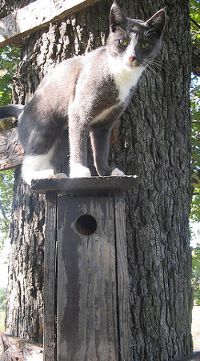
I am being pretty generous by using “spam” and “good people” in the same line, but I am trying to be forgiving. As surprising as it may seem, there are instances where otherwise good people will do spammy things which tarnish their business hopes. I don’t mean the canned meat, SPAM®, either. I mean the spam that happens when people try anything to get your attention.
I view spam as a desperate attempt to be productive while using counterproductive means.
When I say that it is an otherwise good person, it is often simply because they don’t know any better. They get confused by so much hype about the Internet, and end up doing spammy things that tarnish their business hopes, and hurt their chances for successful business communication.
Spam Tactic Number One: Company Names
It may seem innocuous to use a company name instead of a human name, but there is a time and a place for each. You may think this is subjective, but the numbers have come in, and if you are making this mistake, you are very likely hurting your odds.
Regardless what some flunky want-to-be “expert” may have told you, if you are not communicating explicitly on behalf of a company entity, it is best to use your human name. Even in those cases when it is “all business”, if you will be accepting any feedback, you should include your name. You know … the one your parents gave you.
An instance of this spam offense which has come back to hurt thousands of unwitting businesses is creating a Facebook Profile under the company name, but then having it deleted for a Facebook terms of service violation. Why would Facebook delete a profile with a business name? The answer is easy … because they should have been using a Facebook Page. If you don’t know the difference, or just how much it matters, you would be wise to read “Facebook Profiles Are Not For Business … Facebook Pages Are!”

You may argue the perceived benefit of using a company name in place of a personal name all you like, but before you get too set on your opinions, you may want to read an article titled “Social Media Profiles: Keywords, Company Names, and Humans“. It will explain how some of the best researched companies in the world are handling the matter. If you think that using your company name as a replacement for your given name is a good idea, think again!
There are many instances when the brand of a person is far more important than the brand of a company. Sometimes the company name adds authority to the person, but it is even more common that a person adds authority to the company. Heck, in my instance, only a small percentage of people I communicate with are aware that I am CEO of a successful decade-old wholesale Internet services corporation. The ones who need to know (customers and potential customers) are very aware. It shows up on their bill.
A real person with a human name will win the hearts and minds of people over companies every time. Many successful corporations know this, and prove it to be true.
Spam Tactic Number Two: Being False
Claiming to be something or somebody else is just asking for trouble, but it happens all the time. It is more common in personal communications than in business, but it happens in business more than you may like to imagine. This is done in many forms, but I will classify it as “Hot Chick Spam”.

I recall a specific instance of a beautiful lady (or “hot chick” if you prefer) whom I quickly realized was not what she claimed. It was a man who used a name and photograph of a beautiful woman instead of his own, because he was sure that more people would listen to and buy from a good looking woman.
There are certain word patterns, even in short Twitter messages which can give away even the best lies, as well as other obvious discovery tools. In the instance of my “hot chick” example, it only took a moment to figure out that it was a man, so I looked up the website owner with a WHOIS lookup and made a phone call. As I expected, when I asked to speak with the woman from Twitter, the truth came out really quick!
He got over this absurd plan for success once I pointed out how easily he could be exposed. His company also ended up hiring me to handle the search engine optimization for a highly competitive million+ page website. No, will not tell you who he/she was … under any circumstances! What I can tell you is that their business communications are far more legitimate and far more effective now that the company is represented by real people.
Spam Tactic Three: Spammy Blog Comments
If you have a blog, you surely get spam comments, but did you know that some people actually think it is a good strategy? This spam offense aligns with the previous two, but it goes further, and it can become a very destructive tactic for the spammer and the blog owner alike.

This spam tactic is generally executed by using industry keywords (or a company name) in place of a proper name when posting comments to a blog. Since those keywords will then be the link text pointing to the spammer’s website, it is assumed that it will be great for search engine ranking. It makes sense, right? If it could only be so easy, don’t you think everybody would do it? Then it would just be a battle to see who could produce the largest amount of spam. Actually, that does pretty well sum up this kind of spammer’s mentality, but they are so wrong, and they kill their chances of success like you may never believe! Search engines are simply not this stupid.
Ironically, this particular tactic was also previously implemented by the company I mentioned in “Spam Tactic Two.” In their case, they had paid some guys in India to write thousands of pithy blog comments including their website links. They got some extra website visitors out of it, but not the paying kind. When their website was brutally punished by Google and other search engines, they were ready to jump out of a third story window. You know … not really committed to death, but definitely upset enough for a jump.
If you think that something may be spammy, it probably is. I recently replied to this kind of spammer, and he actually answered back saying that he was not a spammer. My answer to that was as follows:
REF: SPAM or Not SPAM? The First Test is Your Name!
Many people agree with my view of blog spammers, but apparently some people still don’t grasp the downsides.
Spam Tactic Four: Follow Me!
There are many obvious examples of this spam tactic found every minute of the day on Facebook and Twitter. It is commonly expected that having a lot of people “follow” what you have to say will matter. But guess what?! Those people who are quick to follow you without a good reason are also likely following about a squillion others just like you. They aren’t paying close attention and just waiting for the right time to send you a wallet full of money. They are usually just following you so that you will follow them back. You know, because that way you will both gain some amazing authority.
The truth that is hard to drive home is that more is not always better. I have given examples of this more times than I can count, but people usually have to make their own mistakes before they learn.
It stunned me how many people thought it was a useful action-list when I wrote a completely smart assed article titled “How To Become Popular on Twitter Without Actually Being Useful“. Apparently a whole lot of people missed my disclaimer that stated as follows:
It does not always have to be an extreme overstatement or effort to be spam-like. If you want people to follow you just to feel better, try buying a feather … they tickle, too!

When the “Twitter Follower Frenzy” or “Facebook Please Like Me” epidemic gets to be so desperate as this obese woman selling weight loss and trying to tell me how to grow a huge Twitter following, it is a clear failure (click the image to enlarge). Note: She has six people following her. Perhaps she meant something else when she said “huge”.
If tweeting and facebooking to a large number of people who do not care about what you have to say is really so useful, how are you measuring that success? Is it in the bank?
People who fall into this addictive need to spam more disinterested people will be better off measuring the cost of their missed opportunities from all that wasted time and energy. If you have fallen prey to the disease, it is time to regroup and get some help to develop a better strategy.
Spam Tactic Five: Shooting at Innocent Bystanders
Trying to reach everybody, instead of a targeted audience is really the widest use of spam. Do you remember how I defined spam as a desperate attempt to be productive while using counterproductive means? Trying to reach everybody is about the worst conceivable spam of all. It not only wastes the time and resources of the spammer, but can create a lot of other possible business communication side-effects.

Before trying to market something, it is important to remember that “everybody” does not want what you offer for sale. “Everybody” is not a target. Lack of focus is the most costly mistake any company can make in marketing, and is often the biggest missing piece in a failed campaign.
The task of targeted marketing using customer modeling based on demographics, psychographics, and propensity analysis really does make the difference. You can count on it!
If you target the right people, and stop shooting blindly, you will no longer need to reach all of the people. The right ones will do the “heavy lifting” for you. When others are promoting your virtues on your behalf, it is no longer spam … it is marketing.
Spam Tactics and the Ignorant
Sure, anybody can be guilty from time to time, and sometimes a small degree of spamminess is just an accident. Ignorance does not mean a person is stupid, but simply that they don’t know any better.
I know that some people will try until their last breath to defend these atrocities. That would be easier than admitting to making huge errors. Maybe they believed a bad pitch from an ignorant marketing agency, or they believed the fairy dust that so many people are promoting each day about Internet marketing.
Sometimes it is the company itself that is the perpetrator of the spamminess, but even more often it is because they trusted the wrong people to handle it for them. I have encountered many companies that believed a crooked marketing consultant, without ever caring to understand whether their tactics were sustainable, and an overall strategy was never even a consideration.
Once the pain sets in, it is too late, and they end up paying somebody like me a whole lot more money to fix their mistakes. That is, to fix the mistake of their prior ignorance.
An even more tragic result is that many companies will keep trying to do the things which do not work, just because they refuse to listen to good advice. When their marketing isn’t working for them, they assume the whole thing just doesn’t work.
These are the people I call the willingly confused. I generally try to be forgiving and patient with them, but those are not my strongest traits. The reason my patience often fails is not because of ignorance, alone, but rather the apathy which so often comes along with it. When you throw a dose of apathy on top of ignorance, the ignorance is sustained because they don’t care enough to overcome it.
Without apathy, ignorance is much easier to fix. When people care to do better, and to know more, ignorance fades with each thing they learn. If you know somebody going down this path, you will be kind to warn them.
Photo Credits:
No Pooping by johannal via Flickr
World Cup Babes Australia by gnews pics via Flickr
Podcast: Play in new window | Download





















